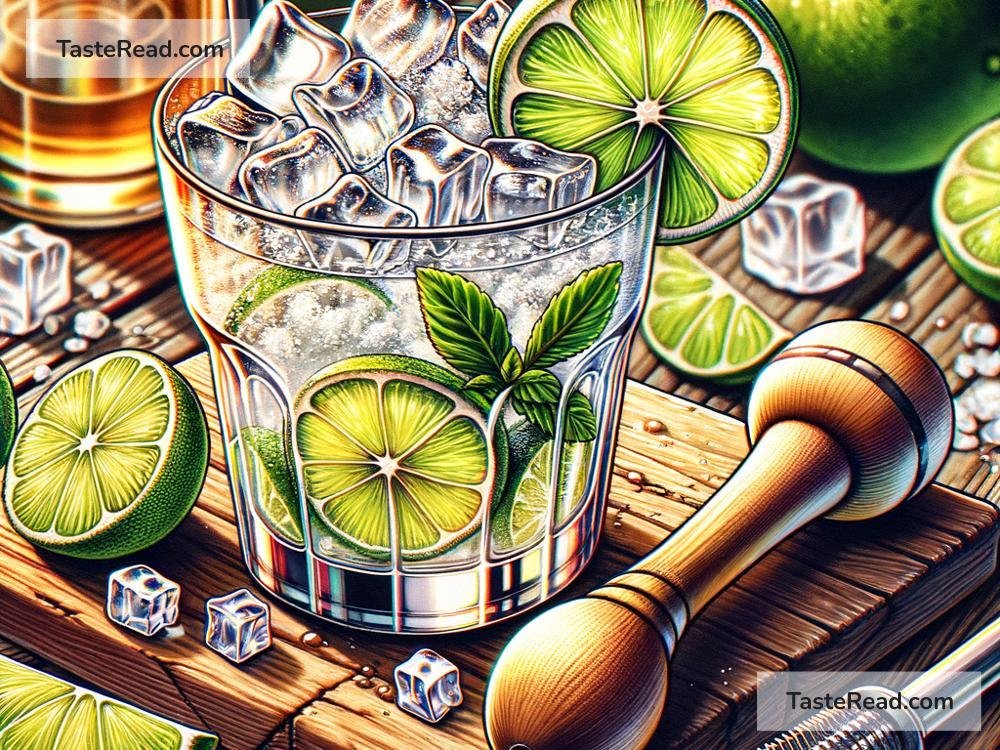The History of the Brazilian Caipirinha: Brazil’s Famous Cocktail
The Caipirinha is Brazil’s most famous cocktail. It’s loved by locals and tourists alike for its freshness, simplicity, and unique flavor. Made with cachaça, lime, sugar, and ice, this drink is a staple of Brazilian culture. But where did it come from, and how did it become such an iconic part of Brazil? Let’s take a look at its history.
What is a Caipirinha?
Before we dive into its history, let’s talk about what the Caipirinha actually is. The word “Caipirinha” comes from the Brazilian Portuguese word caipira, which refers to someone from the countryside, similar to how people in English use “hillbilly” or “country folk.” So, the name “Caipirinha” roughly translates to “little countryside drink.”
The cocktail is made with three key ingredients:
– Cachaça: A distilled spirit made from sugarcane juice. It’s often compared to rum but has its own distinct flavor.
– Lime: Fresh lime slices are muddled to release their juices and aromatic oils.
– Sugar: Typically white sugar, to balance the sourness of the lime.
These ingredients are mixed and served over ice, creating a drink that is refreshing, sweet, and slightly tangy.
How Did the Caipirinha Start?
The origins of the Caipirinha date back to Brazil’s colonial history. Cachaça, the base ingredient of the cocktail, was first produced in the early 1500s. Portuguese colonizers introduced sugarcane to Brazil and started making cachaça, which quickly became popular among enslaved workers and farmers as a cheaper alternative to imported European spirits. Over time, cachaça became deeply rooted in Brazilian culture.
The story of the Caipirinha itself is a bit harder to trace. Many believe it started in the early 20th century as a medicinal drink. Brazil, like many countries, had its traditional remedies for all sorts of illnesses. According to legend, the Caipirinha was originally used as a treatment for colds and the flu. It was made with lime, garlic, honey, and cachaça. The alcohol acted as a disinfectant, while the lime provided Vitamin C, and honey soothed sore throats.
At some point, people realized this concoction tasted delicious when simplified to just cachaça, lime, and sugar. The ice was added later, likely to make it more refreshing on Brazil’s hot summer days. And so, the Caipirinha as we know it today was born.
Becoming Brazil’s National Cocktail
Over the years, the Caipirinha grew from a home remedy to a popular drink for celebrations and everyday enjoyment. By the mid-20th century, it became common to find Caipirinhas at parties and in bars all over Brazil. It’s especially popular during Brazil’s famous Carnival, where people sing, dance, and parade through the streets.
In 2008, Brazil officially recognized the Caipirinha as its national cocktail. The law defined what ingredients could be used to make an authentic Caipirinha—cachaça, lime, sugar, and ice. While variations of the drink exist, the traditional recipe remains protected by Brazilian law.
The Rise of Cachaça Globally
Cachaça was once seen as a drink for the lower classes in Brazil, but its reputation has come a long way. In the 1990s and early 2000s, Brazilian cachaça producers started exporting their products worldwide, introducing international drinkers to the Caipirinha. The unique flavor of the drink gained popularity among bartenders, who started to include Caipirinhas on their cocktail menus.
People around the world now enjoy Caipirinhas not only for their taste but also as a way to experience a piece of Brazilian culture. It’s often considered a fun and accessible cocktail for summer parties because it’s easy to make and uses simple ingredients.
Popular Variations of the Caipirinha
Though the traditional Caipirinha uses lime and cachaça, many Brazilians love experimenting with other fruits or flavors. Some of the most common variations include:
– Caipifrutas: Made with other fruits like strawberries, passion fruit, pineapple, or mango instead of lime.
– Caipiroska: A version where vodka is used instead of cachaça.
– Caipiríssima: Made with rum as the base spirit.
– Caipisake: A modern variation using sake instead of cachaça.
These versions have their own unique twists but still follow the same basic concept of muddled fruit, sugar, and ice combined with alcohol. The possibilities are endless, and each one offers a new way to enjoy the Caipirinha.
The Caipirinha Today
Today, the Caipirinha is more than just a drink—it’s a cultural symbol. It represents Brazil’s vibrant lifestyle, tropical flavors, and love for celebration. Whether you’re sipping one at a beach bar, a Carnival party, or making it at home, enjoying a Caipirinha is like taking a little trip to Brazil.
Learning about the history of the Caipirinha helps us appreciate the drink even more. From its humble beginnings as a medicinal remedy to becoming Brazil’s national cocktail, the Caipirinha tells the story of Brazilian creativity and spirit.
So, the next time you’re craving a refreshing drink, try making a Caipirinha and raise your glass to the rich history and culture of Brazil. Saúde! (Cheers!)


